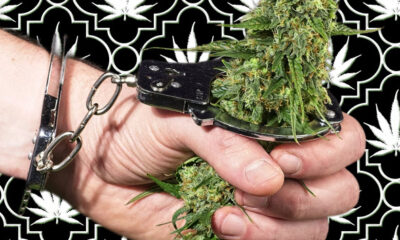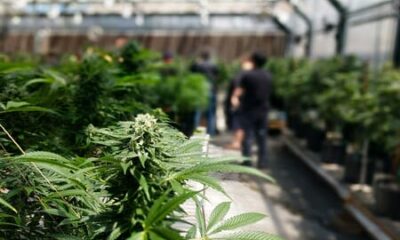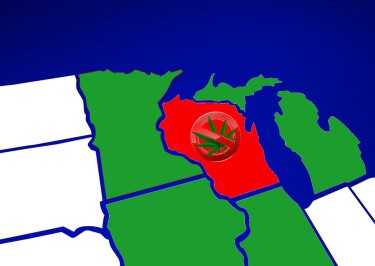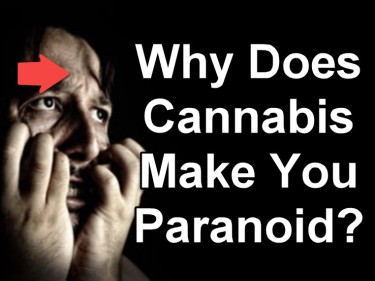Cannabis News
The End of the Hemp Industry? The DEA is Coming for Hemp-Derived Delta-8 THC, And Maybe More Synthetic Cannabinoids
Published
10 months agoon
By
admin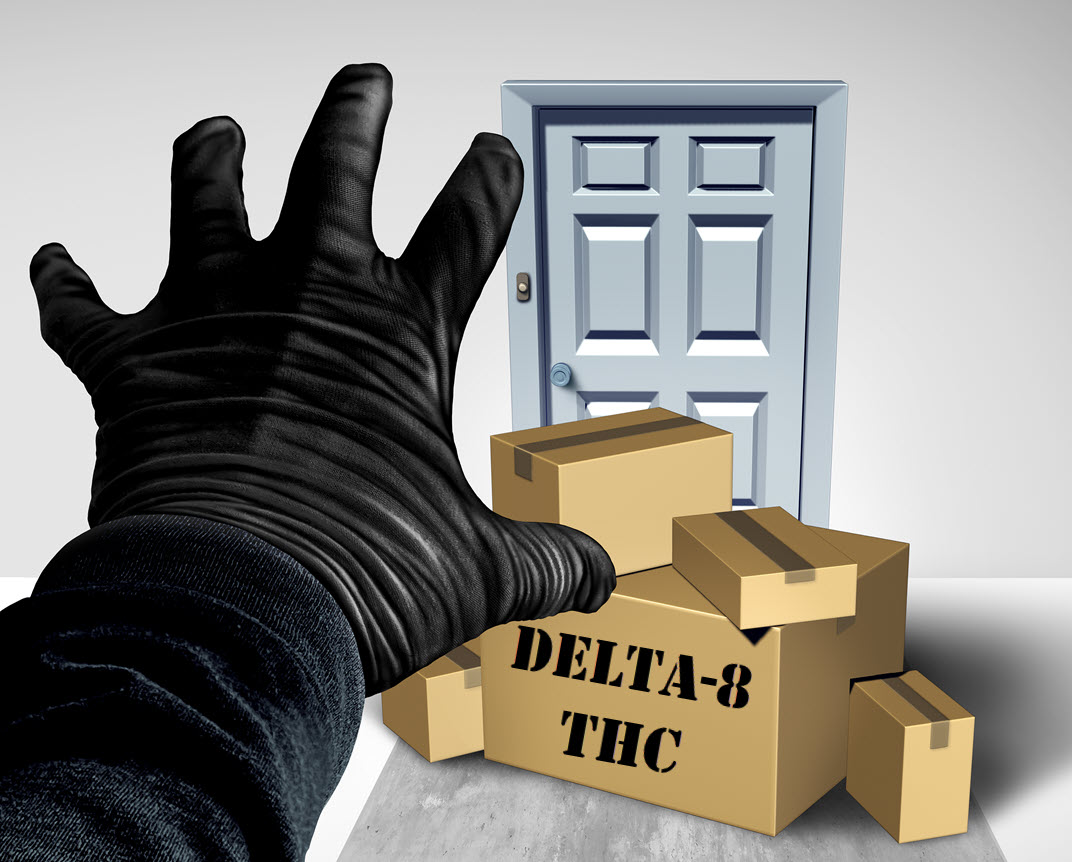

Your Corporate Political Overlords discuss the finer details on how they own you
Did you hear?
The DEA recently released their new updated “slaver’s agreement,” where your bodily autonomy gets violated and labeled a “crime” – in which you forgo your liberty under the 12th Amendment and become property of the state.
Their latest update comes in retaliation to the market’s “loophole”, Delta-8 THC.
Allow me to summarize an article originally published in Marijuana Moment.
The Drug Enforcement Administration (DEA) is at it again, my fellow cannabis enthusiasts. According to recent reports, the DEA is preparing to propose new rules that would classify synthetically manufactured cannabinoids, such as delta-8 THC, as prohibited controlled substances. Oh, joy!
During the agency’s Supply Chain Conference, Terrance Boos, the chief of the DEA’s Drug and Chemical Evaluation Section, revealed their plans to modify regulations on cannabis constituents based on recommendations from the U.S. Department of Health and Human Services (HHS). One proposed change is to “decontrol CBD up to 0.1 percent THC.” In other words, they want to loosen the grip on CBD slightly, but don’t get too excited—it’s a minuscule step in the right direction.
The intention behind these new rules, they claim, is to provide clarity and eliminate confusion surrounding the legal status of various cannabinoids. Since the federal legalization of hemp and its derivatives under the 2018 Farm Bill, the market for cannabis products has exploded. However, the emergence of intoxicating cannabinoids like delta-8 THC has caused quite the stir, prompting lawmakers in various states to scramble and create a chaotic patchwork of regulations for these products.
Here’s the thing, my friends: delta-8 THC does occur naturally in cannabis in trace amounts, and the DEA had previously confirmed that these natural constituents were uncontrolled. But hold on to your hats because they’re about to drop the hammer. The DEA wants to crack down on “synthetic delta-8 THC”, which is produced through a chemical process that converts CBD into this delightful compound.
They argue that synthetic tetrahydrocannabinols, like delta-8 THC, are not exempted from the Controlled Substances Act (CSA), unlike their naturally produced counterparts.
Basically, they just closed the “loophole” with the legal Delta 8 issue.
Now, let’s take a moment to appreciate the sheer brilliance of this move. The DEA, in their infinite wisdom, wants to tighten their grip on a compound that can be obtained naturally from the plant but is suddenly deemed dangerous when synthesized in a lab. It’s almost as if they’re determined to make our lives as difficult as possible while completely disregarding the scientific evidence and the will of the people.
But we know that the Controlled Substance Act never utilized Science or Reason at its core. We know that the CSA is merely a tool of the oppressors
But fear not, my dear readers, for the battle is not lost. The final rule from the DEA is yet to be unveiled, and we must remain vigilant and united in our fight for cannabis freedom. Additionally, there are potential changes on the horizon with the next iteration of the farm bill and President Biden’s review of marijuana scheduling. These developments could shape the landscape of cannabis regulation and have a profound impact on the industry.
However, when it comes to Biden and his ilk – I wouldn’t hold my breath. In fact, those guys are trying to set it up so that Pharma can get main control over the cannabis industry. This is because irrespective of their party colors – they all serve the same masters.
In the midst of this regulatory frenzy, it’s crucial to stay informed and engaged. Companies and individuals must pay attention and actively participate in the discussions surrounding these issues.
The lack of regulatory guidance from the Food and Drug Administration (FDA) only adds to the confusion. The FDA has yet to establish clear rules for hemp-derived CBD products, leaving companies and consumers in a state of limbo.But then again, this isn’t surprising either.
The FDA has the power to reschedule cannabis and provide much-needed regulatory clarity. But alas, they claim they lack the authority to do so without congressional support. Meanwhile, the DEA, who holds the keys to the rescheduling kingdom, insists on relying on the FDA’s scientific review before making any moves. It’s a never-ending loop of finger-pointing and bureaucratic inertia, leaving us stuck in a limbo of uncertainty. Oh, the joys of government bureaucracy at its finest!
This is also by design. It’s not an accident that the FDA – which is primarily funded by Pharma – somehow can’t seem to get the “safety profile” of cannabis after decades and decades of research. But magically, almost as if they were paid billions – they could fast track a vaccine that was not effective at stopping transmissions and empirically didn’t perform that much better than natural immunity.
But I digress.
While we brace ourselves for the DEA’s final rule on synthetic cannabinoids, we must remember that enforcement resources are limited. The FDA is likely to focus on public safety concerns and legality, as demonstrated by their joint enforcement action in Minnesota. The ultimate decision rests with the DEA, and we can only hope they’ll come to their senses and acknowledge the absurdity of their current stance.
So, my friends, let us stand together in defiance of the DEA’s attempts to stifle our freedom and enjoyment of cannabis. We must remain informed, engaged, and vocal in our opposition to these draconian regulations.
But let’s dive deeper into how this will impact the cannabis industry, especially in states that don’t have cannabis laws on the books.
How this change will impact legal THC?
Well, in a nutshell, the DEA has given themselves the power to go out and bust up any sales of Delta-8 that “isn’t natural”. How they will prove this is still to be decided, but essentially, you can expect them to conduct raids or at the very least send out “cease and desist” letters to those establishments that are currently selling it.
But that is only talking about the legal establishments. The real victims here are the people who need access to cannabis in prohibition states.
You see, Delta-8 THC, a cannabinoid derived from hemp, has been providing a legal avenue for individuals, including veterans and those suffering from chronic pain, to access the therapeutic benefits of cannabis without running afoul of strict state laws. It was a glimmer of hope, a ray of light in the darkness of prohibition.
But alas, the DEA, in their insatiable need to remain relevant and flex their authority, has decided to crush that hope.
By classifying Delta-8 THC as illegal, they have effectively cut off the legal option for those who rely on its medicinal properties. Once again, individuals in prohibition states are forced to go underground, to seek out illicit sources for their cannabis needs. It’s a tragic cycle, my friends, one that perpetuates the black market and denies people access to safe, regulated products.
The DEA’s decision is particularly disheartening because it disregards the growing acceptance and tolerance of adult drug use in our society.
As more and more states embrace cannabis legalization, it seems the DEA is desperately clinging to the vestiges of a bygone era. Instead of adapting to the changing times and acknowledging the potential benefits of cannabis, they choose to stifle progress and maintain their grip on power.
In doing so, the DEA not only undermines the rights of individuals to make informed choices about their own well-being but also perpetuates the harms of the black market. It’s a lose-lose situation, my friends.
Those in need of cannabis for medical purposes are left without legal options, and the black market thrives once again, with all its associated dangers and risks.
So, we find ourselves in a familiar position, caught in the crossfire of outdated policies and misguided attempts to control what people choose to put in their bodies.
It’s a frustrating reality, but one that only strengthens our resolve to advocate for sensible drug policies and the rights of individuals to access the substances that can improve their quality of life.
My dear friends, the time has come for a new conversation, a conversation that challenges the outdated notions surrounding drugs, drug use, and individual autonomy. We must question the hypocrisy that exists in our society, where we are allowed to consume unhealthy processed foods and poison ourselves with high-fructose garbage, but somehow lack the intelligence to make informed decisions about other substances.
It’s time to recognize that agencies tasked with protecting us from ourselves are unnecessary and often hinder progress. We should have the right to determine what we put into our bodies, as long as we are aware of the risks and benefits involved. The freedom to make choices about our own well-being should extend to all areas of consumption, not just those deemed acceptable by societal norms.
Let us be outspoken about these issues, my friends. Let us challenge those who cling to archaic ideas and stand in the way of progress. It is time to evolve beyond the restrictive mindset of the 1900s and embrace a future where individual autonomy is cherished and respected.
Together, let us advocate for a society that values personal freedom, informed decision-making, and the right of individuals to determine what is best for their own bodies. Only through open dialogue and a commitment to change can we pave the way for a more enlightened and compassionate approach to drugs and human rights.
So, my friends, let us raise our voices, challenge the status quo, and forge a path towards a future where the rights of individuals are paramount. The time for change is now, and together, we can create a society that truly embraces individual autonomy as a sacred right.
MORE ON THE DEA OVER-REACH, READ ON…
THE DEA IS COMING FOR DELTA-8 THC, HHC, AND HEMP-DERIVED PRODUCTS!
Cannabis News
Criminalizing Cannabis Doesn’t Work at All
Published
9 hours agoon
April 19, 2024By
admin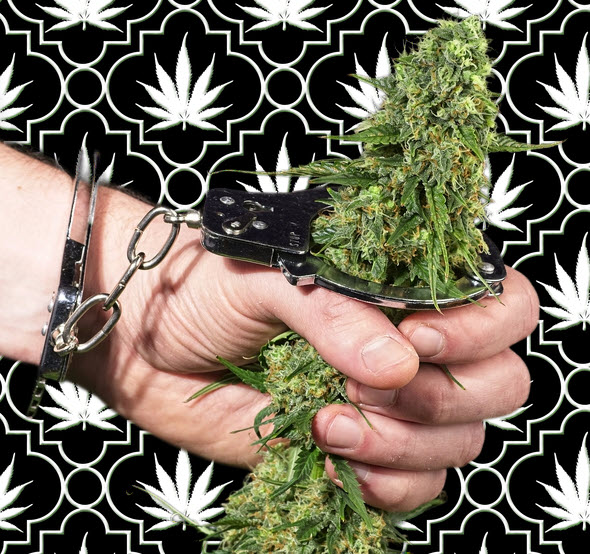

Why criminalization doesn’t curtail consumption
The spirit of prohibition is rooted in the desire to restrict individuals from accessing certain substances or engaging in particular activities deemed harmful or undesirable by those in power. At its core, prohibition is a paternalistic approach that employs the threat of severe consequences, often in the form of state-sanctioned violence, to discourage and punish those who dare to defy the established rules. If we were to remove the veneer of governmental authority from this equation, the true nature of prohibition would be laid bare as a hostile and coercive scenario, where the individual’s autonomy is subjugated to the whims of the ruling class.
Proponents of prohibition argue that this looming threat of violence is a necessary evil, a means to an end in the quest to curtail consumption and send a clear message to impressionable youth that certain behaviors will not be tolerated. They claim that by instilling fear of legal repercussions, society can effectively deter individuals from engaging in prohibited activities, thereby protecting them from potential harm. “The law will punish you!” becomes the rallying cry of those who believe that the heavy hand of the state is the only way to maintain order and public health.
However, a recent Gallup poll has called into question the very foundation upon which the edifice of prohibition is built. The survey found that rates of marijuana use are nearly identical in states that have legalized the substance compared to those that continue to maintain its prohibition. This startling revelation suggests that criminalization has little impact on actually curbing consumption, challenging the long-held belief that the threat of punishment is an effective deterrent.
In light of this new evidence, it is time to ask ourselves: isn’t there a better way? If prohibition fails to achieve its stated goal of reducing substance use, while simultaneously perpetuating a system of violence and oppression, should we not seek alternative approaches that prioritize harm reduction, education, and individual liberty? The spirit of prohibition may be deeply entrenched in our society, but the cracks in its foundation are beginning to show, inviting us to imagine a future where the individual’s autonomy is respected and evidence-based policies prevail over fear-mongering and coercion.
The recent Gallup poll on marijuana use in the United States has shed new light on the effectiveness, or lack thereof, of drug prohibition. The survey, which involved interviews with 6,386 U.S. adults from November 30, 2023, to December 8, 2023, found that rates of marijuana use are nearly identical in states that have legalized the substance compared to those that continue to maintain its prohibition. This finding strikes at the heart of the argument that criminalization is necessary to curb drug consumption.
According to the poll, one in 10 American adults reported using marijuana 10 or more times in the past month, while one in five admitted to using cannabis at least once during the same period. When broken down by state legal status, the data revealed that 9.7 percent of adults identify as regular cannabis consumers in states that have enacted legalization, compared to 8.6 percent in non-legal states. This narrow gap in consumption rates suggests that criminalization has little impact on deterring use among American adults.
The poll also examined marijuana use across different age groups and regions. Interestingly, there were no significant differences in consumption rates between adults aged 18-29, 30-39, and 40-49, with all three age groups averaging around 12 percent regular use. The survey accounted for the various methods of marijuana consumption, including smoking, vaping, and consuming edibles, ensuring a comprehensive assessment of use patterns.
Perhaps most striking is the finding that the West region, which includes states like California, Oregon, and Washington that have established adult-use cannabis markets, has a slightly lower usage rate (10 percent) compared to the Middle Atlantic region (11 percent), where only Pennsylvania has maintained prohibition for adult use. This data further undermines the notion that legalization leads to increased consumption.
The Gallup poll provides compelling evidence that the criminalization of drug use has little to no impact on actual consumption rates. As the debate surrounding drug policy continues to evolve, these findings should serve as a catalyst for policymakers to reevaluate the efficacy of prohibition and explore alternative approaches that prioritize public health, harm reduction, and individual liberty over punitive measures that have proven ineffective in curbing substance use. The data speaks for itself: it is time to abandon the failed war on drugs and embrace evidence-based strategies that address the root causes of substance abuse while respecting the autonomy of individuals.
It’s a simple truth that has been consistently demonstrated throughout the history of drug prohibition: those who want to consume substances will find a way to do so, regardless of the legal status or societal stigma attached to their chosen intoxicant. Even during the height of the drug war, when draconian policies and harsh punishments were the norm, consumption rates never significantly declined. In fact, they often remained stable or even spiked in response to the increased pressure from law enforcement, highlighting the futility of attempting to control human behavior through brute force and intimidation.
The reality is that if someone wants to get high, they can and will find a way to do so. It’s a matter of networking and tapping into the right circles, and virtually anyone with a bit of determination and resourcefulness can gain access to illicit substances. Ironically, even playing into stereotypes can sometimes lead to success in this endeavor, as the black market thrives on the very prejudices and assumptions that society perpetuates.
But the larger point here is that drugs are an inextricable part of our society, woven into the fabric of human experience for millennia. From ancient rituals to modern-day experimentation, the desire to alter one’s consciousness has been a constant throughout history. It’s high time we recognize this reality and adjust our approach accordingly, rather than clinging to the misguided notion that we can somehow eradicate drug use through punishment and prohibition.
By keeping substances illegal, we create a host of other risks and problems that only serve to compound the harm associated with drug use. The unregulated nature of the black market means that users have no way of knowing the purity or potency of the substances they consume, leading to increased risk of overdose and other adverse health effects. Moreover, the criminalization of drug use perpetuates a cycle of stigma, marginalization, and incarceration that tears families and communities apart, while doing little to address the underlying causes of addiction and substance abuse.
It’s time for a paradigm shift in how we approach drug policy. Rather than futilely attempting to eliminate drug use through prohibition, we must acknowledge that intoxication is a part of the human experience and work to mitigate the harms associated with it through evidence-based strategies rooted in public health and harm reduction. By decriminalizing substance use and treating it as a matter of personal choice and individual liberty, we can create a society that is more compassionate, more just, and ultimately safer for all. Because at the end of the day, those who wanna smoke, will smoke – and it’s up to us to ensure that they can do so in a way that minimizes risk and maximizes well-being.
As we navigate the ever-shifting landscape of drug policy, it’s crucial to remain vigilant and aware of the potential pitfalls that lie ahead. In recent years, I’ve noticed a polar shift from the left to the right, a trend that, while bearable for now, carries with it the risk of veering too far into the dangerous territory of the “drug war.” It’s important to remember that it was through the lens of the “polar-right” that prohibition first laid its roots, and we must be cautious not to repeat the mistakes of the past.
As the debate surrounding cannabis legalization continues to evolve, it’s essential to scrutinize the policies being put forth and to recognize when they may not be in the best interest of the people. The proposed shift to Schedule-III, for example, is not the victory that many advocates have been fighting for. It’s not the true legalization that the cannabis community seeks, but rather a half-measure that fails to address the fundamental issues at play.
The people who have fought tirelessly for cannabis reform want nothing less than the recognition of their fundamental human right to grow, cultivate, sell, and gift this plant as they would any other commodity, like tomatoes. They seek a world where the government respects their autonomy and trusts them to make informed decisions about their own well-being, without the need for excessive regulation or control.
Instead, what we’re seeing is a government that seems intent on playing the pharmaceutical game, attempting to schedule cannabis in a way that would effectively remove it from the hands of the people and place it under the control of corporate interests. This is not the vision that the cannabis community has been fighting for, and it’s crucial that we recognize this fact and push back against any attempts to subvert the will of the people.
As we move forward, let us hold fast to the hope that the past will remain in the past, that the dark days of prohibition will fade away into the annals of history, and that the institutions that have long kept the gates of progress closed will wither and crumble.
Let us work together to build a future where the autonomy and liberty of the individual are respected, where evidence-based policies prevail over fear and stigma, and where the harms of the drug war are finally laid to rest.
May we learn from the mistakes of the past and forge a new path forward, one that values compassion, understanding, and the fundamental rights of all people.
LEGAL VS NON-LEGAL WEED STATES, READ ON…
Cannabis News
Can Magic Mushrooms Make You Paranoid Like Weed Sometimes Does?
Published
11 hours agoon
April 19, 2024By
admin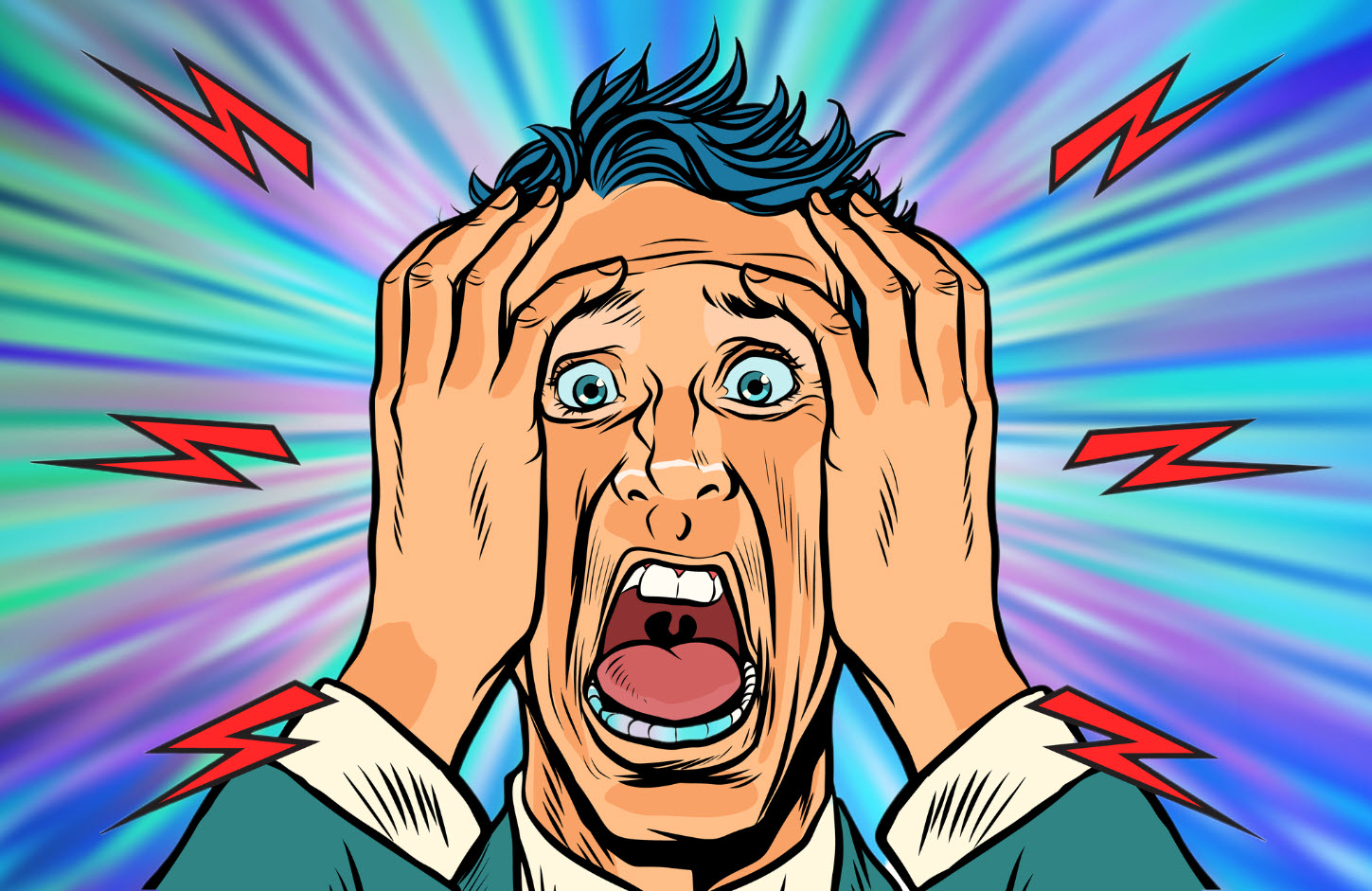

As more and more studies explore the potential therapeutic benefits of psilocybin, the main hallucinogenic ingredient in magic mushrooms, encouraging results are being found for several ailments that do not respond well to traditional therapies. In spite of this, many people find it frightening to venture into the world of psychedelics.
Much like the old “reefer madness” hoax surrounding cannabis, psilocybin and other psychedelics are rapidly losing their stigma in society. There is less evidence to support the claim that psychedelic experiences always result in psychosis and other mental health problems.
Studies show that emergency room visits related to psilocybin use are exceedingly rare, with most negative effects stemming from factors like mindset, setting, and substance combinations, often resolving within a day.
While acknowledging the inherent risks in any medical intervention, recent research has focused on examining adverse effects associated with psilocybin therapy for anxiety and depression. A meta-analysis published in JAMA Psychiatry by researchers from the University of Georgia, Larkin University, and Palm Beach Atlantic University scrutinized double-blind clinical trials spanning from 1966 to 2023.
The findings identify anticipated adverse effects of psilocybin therapy for depression and anxiety, but notably, paranoia and transient thought disorders were reported infrequently compared to other symptoms.
Reflecting on Past Research to Shape the Future
The authors of a recent study on psilocybin treatment for depression and anxiety disorders commence by highlighting the existing body of research on the subject. They note that while previous clinical investigations have primarily focused on efficacy, there has been a notable absence of emphasis on the safety profile of psilocybin.
In order to analyze the side effects associated with therapeutic dosages of psilocybin in the treatment of depression and anxiety, researchers reviewed a large number of relevant publications. These studies included randomized clinical trials that compared psilocybin to placebo groups or other comparators. Furthermore, based on previous clinical data, the researchers divided the delivered dosages into three categories: low (1-3 mg), moderate (10-20 mg), and high (20-30 mg).
The analysis involved six distinct studies involving a collective total of 528 participants. Notably, participants typically experienced adverse effects either immediately or within 24 hours following psilocybin administration. Despite common misconceptions surrounding psilocybin and similar psychedelics, the study authors found no evidence linking psilocybin to the onset of paranoia or transient thought disorders, which are characterized by sudden psychotic symptoms.
Among the adverse effects observed across all six studies, headache (with an incidence ranging from 2% to 66%) and nausea (ranging from 4% to 48%) were consistently reported. Anxiety was documented in three of the studies, with incidence rates ranging from 4% to 26%. The authors also highlight that all adverse effects, except for elevated blood pressure, were estimated to occur in less than 50% of participants.
Psilocybin Induces Manageable Short-Term Side Effects with Prompt Resolution
In their discussion, researchers emphasize the necessity of summarizing the acute adverse effects of psilocybin in treating depression and anxiety for healthcare professionals. They highlight that understanding these effects is crucial for effective patient counseling. The study reveals a statistically significant occurrence of headache, nausea, anxiety, dizziness, and elevated blood pressure, which aligns with the expected side effects of serotonergic antidepressants due to psilocybin’s mechanism of action.
The research documents three instances of paranoia and transient thought disorder in high-dose psilocybin across 128 patients, with therapist or facilitator assistance likely mitigating potential complications. While the incidence of paranoia and transient thought disorder appears low, the study underscores the importance of exploring these adverse effects further.
Conclusively, the study finds that therapeutic doses of psilocybin generally result in tolerable acute adverse effects that typically subside within 24 to 48 hours. However, less common adverse effects like paranoia and prolonged visual perceptual effects merit attention.
The authors advocate for larger trials to comprehensively assess adverse effects, particularly in populations with concurrent health conditions. They also call for research focusing on medication efficacy, alternative treatments, and the role of licensed therapists in managing adverse effects.
They recommend that guidelines for monitoring acute adverse effects encompass headache, nausea, anxiety, dizziness, paranoia, blood pressure and heart rate fluctuations, visual perceptual changes, physical discomfort, and mood alterations at a minimum.
Shifting Perspectives on Psychedelics
The research of the therapeutic potential of psychedelics, notably psilocybin found in magic mushrooms, reveals that cultural attitudes are progressively changing. Psychedelics, formerly stigmatized and feared, are increasingly receiving recognized for their promise ability to address mental health issues that are resistant to traditional therapy. This paradigm change represents a break from old narratives that presented psychedelics as inherently hazardous and without therapeutic potential.
The changing way that society views psychedelics is reflected in the expanding body of research that examines their potential therapeutic uses with ever-greater rigor and detail. The potential of medicines like psilocybin to facilitate remarkable healing experiences is becoming increasingly recognized as scientific research reveals the processes underlying these effects. This new insight emphasizes the significance of taking a balanced approach to psychedelics, acknowledging both their therapeutic potential and concomitant hazards.
Within this evolving landscape, the role of healthcare professionals and researchers is pivotal in shaping informed discourse and evidence-based practices surrounding psychedelic therapy. By fostering open dialogue and disseminating accurate information, stakeholders can dispel myths and misconceptions while promoting responsible and ethical use of psychedelics in clinical settings. Furthermore, by advocating for robust regulatory frameworks and comprehensive training programs, professionals can ensure the safe and effective integration of psychedelics into mental health care.
It is critical to foster a climate of respect, empathy, and understanding surrounding the use of psychedelics as society works to move past the stigma. Through the adoption of a balanced viewpoint that recognizes the possible advantages as well as disadvantages of psychedelics, we may effectively utilize their therapeutic potential while preserving personal health. In the end, the movement toward psychedelic acceptance and de-stigmatization is a big step forward in the search for novel and all-encompassing methods of providing mental health care.
Bottom Line
As research continues to uncover the therapeutic potential of psychedelics, particularly psilocybin, societal attitudes are shifting away from stigmatization toward recognition of their promise in addressing mental health challenges. This evolving perspective, mirrored by an expanding body of rigorous research, emphasizes the importance of informed discourse, responsible use, and comprehensive regulatory frameworks to ensure the safe and effective integration of psychedelics into mental health care. By fostering understanding and respect for the potential benefits and risks of psychedelics, society can move toward a more holistic approach to mental health treatment.
PARANOIA WITH WEED OR MUSHROOMS? READ ON…
Cannabis News
California Gives Up on the Illegal Cannabis Market: More of the Same
Published
1 day agoon
April 18, 2024By
admin
Last week, California’s Department of Cannabis Control (DCC) released illegal market enforcement data for quarter 1 of 2024. It’s become a new tradition of mine to compare this quarterly data and see whether the state is actually doing anything to fight the illegal market (for example, see my posts for Q4 2023, Q3 2023, and Q2 2023).
What does California’s Q1 2024 data show?
Below is a side-by-side comparison of the enforcement data published by the DCC from Q1 2024 as compared to Q4 2023:
| Q1 2024 | Q4 2023 | |
| Search warrants served | 18 | 24 |
| Pounds of Cannabis Seized | 31,866 | 13,393.65 |
| Retail Value of Cannabis Products Seized | $53,620,600** | $22,294,571.41 |
| Cannabis Plants Eradicated | 54,137 | 20,320 |
| Firearms Seized | 11 | 26 |
| Money Seized | $34,858 | $35,195.25 |
[**Note that the DCC’s Q1 2024 data does not have the same chart as prior data sets, and some of the data points were characterized differently. For example, the amount of cannabis allegedly seized was referred to as the “retail value” in Q3 2023, but not in Q1 2024. It is therefore unclear exactly what DCC means and how it reached these value calculations.]
Interpreting the illegal market data
Q1 2024 saw an increase in seizure of plants and pounds of harvested cannabis. I don’t think we can extrapolate too much from the agency’s valuation, but the numbers certainly increased. So by that metric, the needle has moved a bit.
At the same time, we saw a 25% decrease in the number of warrants served. That means that the locations that were raided (1/3 of which were in Orange County) had a lot more cannabis and plants than those raided in Q4 2023. I interpret this to mean that most or all of these 18 warrants were served on illegal grows, warehouses, or manufacturing operations, and not on retail facilities. While that may be a slight disruption in supply to the illegal market, it is undoubtedly just a drop in the bucket.
Anything else to add?
I’ll keep this post relatively brief for today. There isn’t much else to report on the enforcement front. There are a host of potential cannabis-related bills making their way through the legislature, some of which may do good (see here and here for example), and some of which may make life even harder for licensed businesses.
It’s worth noting for the trillionth time that anything the state does to make life harder for legal operators will make things better for the illegal market. And the state seems to be aggressively committed to making things as difficult as possible for people who invested years and endless amounts of money to get licensed.
Then there are these crazy stories we sometimes hear about people who did nothing wrong and got penalized, or who followed all the rules and got in trouble regardless. Here’s an example of an alleged crazy fact pattern I recently say a lawyer write about on Twitter:
Joined my @IJ colleague Jared McClain in San Francisco this morning for oral argument before the Ninth Circuit (screenshot of the argument below).
We’re representing a group of property owners in Humboldt County, CA, who are facing massive fines imposed because other people… pic.twitter.com/hv2gQHzSJz
— Rob Johnson (@FreeRangeLawyer) April 9, 2024
I’ll be back next quarter to report on the state of affairs with California’s so-called enforcement against the illegal market. I hope to have better news, but doubt I will.

Toast 4/20 With A THC Infused Mocktail

The Best Tips On How To Avoid Weekend Couchlock

These 5 Woman Are Changing 4/20

Criminalizing Cannabis Doesn’t Work at All

Uses, Effects, and Legal Status Worldwide

Can Magic Mushrooms Make You Paranoid Like Weed Sometimes Does?

Before 420 Fest, Afroman talks cannabis legalization and why Coloradans make him uncomfortable

7 Suggestions To Celebrate 4/20

Vinyls and Marijuana Go Together

California Gives Up on the Illegal Cannabis Market: More of the Same

Distressed Cannabis Business Takeaways – Canna Law Blog™

United States: Alex Malyshev And Melinda Fellner Discuss The Intersection Of Tax And Cannabis In New Video Series – Part VI: Licensing (Video)

Drug Testing for Marijuana – The Joint Blog

What you Need to Know

Cannabis, alcohol firm SNDL loses CA$372.4 million in 2022

NCIA Write About Their Equity Scholarship Program

City Of Oakland Issues RFP For Employee Training Programs

It has been a wild news week – here’s how CBD and weed can help you relax

A new April 20 cannabis contest includes a $40,000 purse

UArizona launches online cannabis compliance online course
Trending
-

 Cannabis News1 year ago
Cannabis News1 year agoDistressed Cannabis Business Takeaways – Canna Law Blog™
-

 One-Hit Wonders1 year ago
One-Hit Wonders1 year agoUnited States: Alex Malyshev And Melinda Fellner Discuss The Intersection Of Tax And Cannabis In New Video Series – Part VI: Licensing (Video)
-

 drug testing4 months ago
drug testing4 months agoDrug Testing for Marijuana – The Joint Blog
-

 Cannabis 1011 year ago
Cannabis 1011 year agoWhat you Need to Know
-

 Marijuana Business Daily12 months ago
Marijuana Business Daily12 months agoCannabis, alcohol firm SNDL loses CA$372.4 million in 2022
-

 Education1 year ago
Education1 year agoNCIA Write About Their Equity Scholarship Program
-

 Education1 year ago
Education1 year agoCity Of Oakland Issues RFP For Employee Training Programs
-

 Cannabis1 year ago
Cannabis1 year agoIt has been a wild news week – here’s how CBD and weed can help you relax








